A look at Chicago’s Willis Tower, one of the most iconic office buildings in the United States, opens a conversation about broader issues around where work comes into being and changes over time.

Work Design is all about the places we work, how they function, and what factors go into the planning and design of successful workplaces. We have looked at this from many different angles, including our Expert Insight, CEO talk articles and our series of events and panel discussions. Circling all the components of how and where we work, we wanted to expand the conversation about where we decide to work and what kind of decisions are made around the cities and buildings that house the places we talk about.
The workplace is not just about the real estate decision, yet the location is the first thing a company chooses when deciding to start a business, open an office, or relocate an existing physical location. It is perhaps one of the most critical decisions any business faces. A pitch to write about the re-positioning of one of the most iconic office buildings in the United States, The Willis Tower, got us thinking about alternate ways to discuss the broader issues around where work comes into being and changes over time. This story opens our dialogue about the workplace in general and perhaps gives us a bigger picture of Work Design and even more to talk about.
If you have never been to Chicago or seen the building, check out this video.
First a bit of history. At 110 stories, the Willis Tower was initially known as the Sears Tower. Completed in 1974 it was the corporate headquarters of Sears Roebuck and Company, then the largest retailer in the world and was the tallest building in America. The tower took three years to build. Skyscraper and construction geeks can watch the variety of videos with more information on the history and construction of the building posted at the end of this article.
What may be of interest to our readers, is that Sears contracted New York interior design firm SLS Evironetics to do the original programming and planning for the 4.4 million SF building, even before the building architects were retained. In the late sixties, this was one of the first projects to be designed utilizing computer-aided design. Those preliminary studies included questionnaires submitted by all Sears departments, to determine how much space each would need. The research also confirmed how much space would immediately be required upon the building completion and projected how much would be required over an expected growth period of thirty years. Looking back at the historical information on how the building was conceived and built to meet the companies projected needs for workspace could conceivably be considered ahead of its time concerning the planning and programming process. Once Sears management had all the data from planning studies, they retained Skidmore, Owings & Merrill. The design team was led by Bruce Graham with Fazlur Khan as a structural engineer.
Ironically, Sears projections and expectations did not meet reality, and they never fully occupied the building, and in the early 1990’s left the property entirely relocating the headquarters again to suburban Chicago. The building weathered changes in ownership multiple re-recapitalizations as the market changed, competition increased, tenant profiles and demands changed. The tides changed considerably after current owner, Blackstone with Equity Office initiated significant renovations and the building was renamed Willis Tower in 2009 after the Willis Group Holdings, the global insurance broker with their Midwest headquarters located in the building.
What better way to find out what is happening now, than to visit the Willis Tower, in Chicago, IL. We recently had the opportunity to meet with David Moore, Senior Vice President at Equity Office who is leading the effort to revitalize this landmark building.

Work Design sat down with David in one of the new amenity spaces on the 33rd floor mid-morning on a beautiful sunny day. The entire floor has been re-imagined as one of two full floor tenant amenity spaces. Even at that hour, the space was busy, but we found a quiet spot to have our conversation.
We’re seeing a lot of building re-positionings and upgrade projects. Due to the size, scale and iconic nature of the Willis Tower, what are the driving forces behind Equity’s strategy in work completed and currently underway?
The planned $500M investment scales with the size and importance of the building in the Chicago community. It was built at a time when the concept of office buildings was very different from what it is today. The building was designed for a single tenant, solely to support its business. The building has gone through several iterations and owners over the past 40 years. Blackstone (the owners) wanted to update the building to meet the requirements for workspace as it is evolving in today’s current market.
Market conditions and the landscape of the Loop has changed considerably over the last several years. For aging building owners, there is always the pressure to remain competitive and fully leased. With the addition of new buildings, re-purposing several older buildings into residential or hotel space, and increasing tourism opportunities, it was time to look at where Willis Tower could fit into and add to the revitalization of the neighborhood.
What are the main features of the planned renewal projects?
We looked at how the building relates to the immediate surroundings. As originally designed, the building was a fortress. It was not open or relating to the surrounding neighborhood.
Starting from the street level, the over-riding design goal of the renovation was to open the building up to the neighborhood, to be more inviting and dynamic. Engaging the passer-by, the tenant, the tourist, with what is going on in the building will create a livelier and more open environment. Having more options for dining, entertainment, and shopping benefits not only the tenants but the entire neighborhood. This stretch of Wacker Drive has lacked the energy of other areas of the business district. Also, the proximity to the development, both residential and commercial, in the adjacent West Loop just expands the options for everyone.
Learn more information on the renewal projects here.
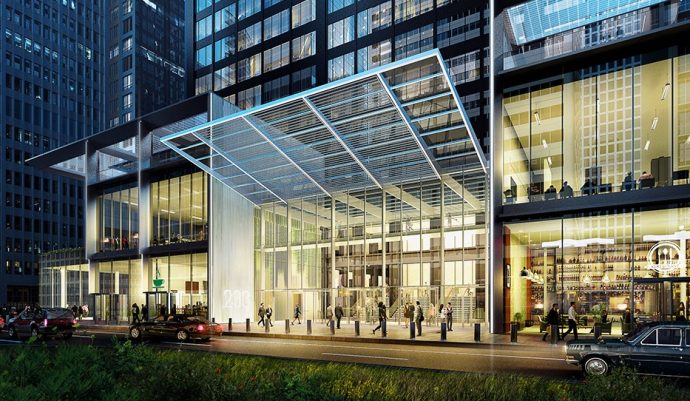
What about the tenant experience? How have you planned to enhance that?
As you can see from the activity in the Tower House this morning – the tenant experience was paramount in our considerations. Tenants are not just looking for their leased space but are taking a more critical look at what other amenities are available in the buildings they choose for their offices. Where newer buildings have these spaces built into their program from the start, those of us with portfolios of older buildings need to figure out how to integrate these spaces into the existing building envelope. Fortunately, Willis Tower offered multiple options for us to create state of the art facilities for our tenants to enjoy. We have completed the 33rd-floor upgrades, which include our current location, The Tower House, The Steel Room, an event space available by reservation, and Tone, a 30,000SF fitness facility.
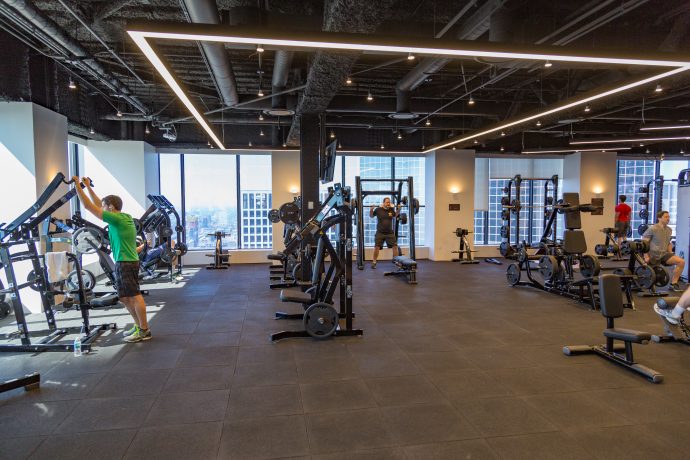
Speaking of tenants, how have they reacted to the changes both planned and now completed?
We have the advantage of high occupancy to start out with, so the changes have been very well accepted by our existing tenants. They are utilizing the café/lounge spaces throughout the day. The fitness center is doing well.
When asked about the changes made to date, the tenant feedback was positive:
“Our employees are excited to be in this newly remodeled iconic building. The perks of the unparalleled views, common areas on the 33rd & 66 floors, as well as the gym provides high energy to the team.” – Jon Aderson, BenchPrep
“The gym on the 33rd floor is so convenient and nice. The facility itself is well maintained and has spectacular skyline views throughout the gym, the locker rooms and showers are nice as well. I have heard only positive feedback from employees.” – Krista Blatt, IMC
To learn a bit more, from the tenant point of view we scheduled some time with Zackery House, CEO of Environmental Systems Design, Inc. (ESD), a global engineering firm that relocated to the 53rd and 54th floor of the Willis Tower in April 2017.
What prompted your move to the Willis Tower?
We started looking for new space about a year prior to our move. We wanted to find space to accommodate our growing (currently 280 employees) workforce at our headquarters, here in Chicago. It was time to provide a workspace that was more conducive to the way we work now and provide a better environment for our people. We also must consider how our office space affects our ability to recruit and retain talent.
How did you settle on the Willis Tower?
There were a few differentiating factors. First, we have a long-standing relationship with Equity Office, not only as a tenant, but they are also a client. We were also impressed with the efforts in the works to reposition the building. That was a game changer, from the added amenities to the physical improvements, which will improve the work environment for our employees and be attractive to potential employees. Also, the space itself on the 53rd and 54th floors, offers panoramic views of Chicago and its environment. Moving from a 14th floor space, a block away, to a space in an iconic, architecturally distinctive building, allowed us to create an environment to foster innovation and become a living lab that showcases what we do, daily.
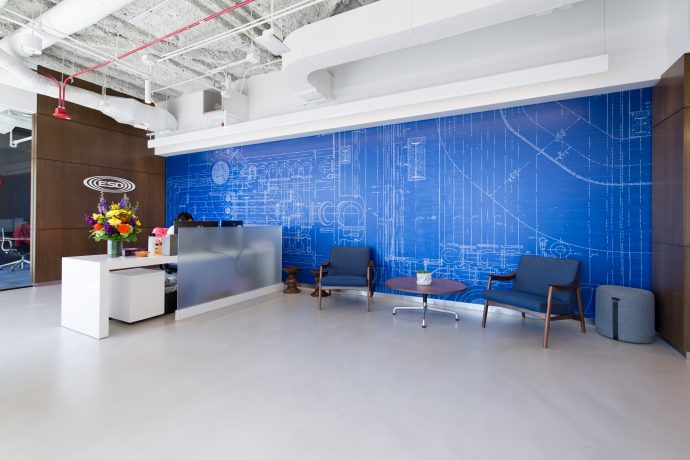
What kind of changes with the staff, have you observed, since relocating?
We see a lot more collaboration among the engineers. We created a more open plan and see increased interaction, and a more positive attitude about coming to work. Having everyone together in the space has made quite a difference. We put a significant amount of effort in keeping employees informed about the move and the new space and that translated into a more seamless integration into the office. We had several town halls, shared updates on the design and build out progress, and scheduled off-site meetings in the building so people could experience the amenities in advance of the move.
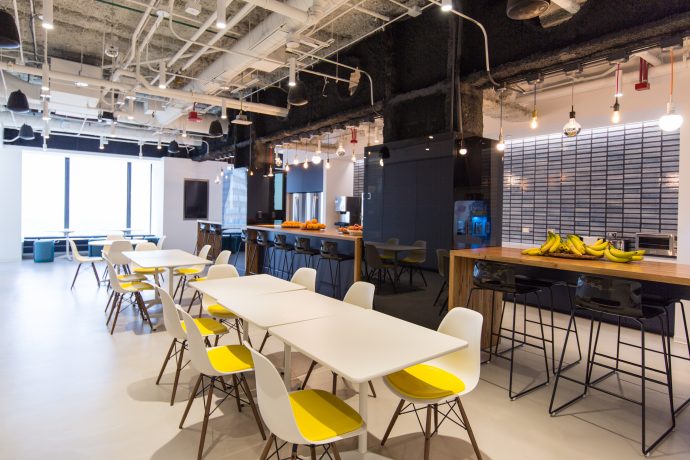
How is your company taking advantage of the building amenities?
We reimburse our employees for their membership at Tone, the in-house gym facility. That is a greatly appreciated benefit, not only to present to potential employees, but is also good for our employees’ well-being to have ready access to a great work-out facility that is convenient to their work place. We have also utilized the meeting space available at Tower House, especially for our corporate all-hands meetings and town halls. We have always used the Metropolitan Club for catering, and have found that having the meeting functions in the building certainly makes it easy to plan and schedule events in immediate proximity to our offices.
Overall, how has the move to new space affected your business?
The move has brought a lot of energy back into our 50-year old firm. The rejuvenation has helped us re-focus on how we work and deliver to our clients. Being in an iconic Chicago building that is also a marvel of design and engineering reminds us that what we do everyday to advance the built environment inspires us to move forward and think about future possibilities.
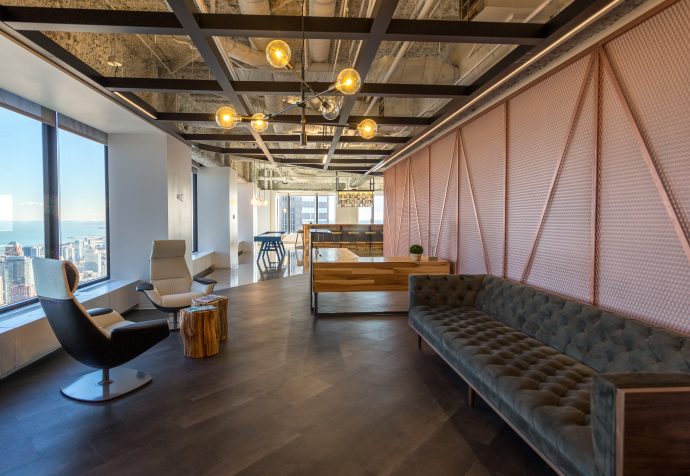
How are you going about enticing new tenants to the building?
Of course, the planned and completed amenity spaces speak for themselves. Potential tenants can see the renewed energy of the shared spaces and how they can enhance the work experience. We have also built out speculative suites to help people envision how our space can be built out to meet their needs. Two of our spec suites have been leased, with the tenants purchasing the furnishings, allowing them to acquire move- in ready space.

Let’s go back to the public spaces and the planned improvements there. Besides opening the lobby areas to the street, what else will we see when all the work is completed?
The Skydeck and Ledge is one of the most popular tourist attractions in Chicago and is a catalyst for many of the planned changes to the upgrade of the building’s public areas. We want to create more “destination” places in the building to augment the experience of the Skydeck and the Ledge. The 103rd-floor attraction brings more than 1.7 million visitors yearly. Expanding other dining, shopping and entertainment opportunities in the building increases the viability of the building not only to the tenants but the surrounding neighborhood and city.
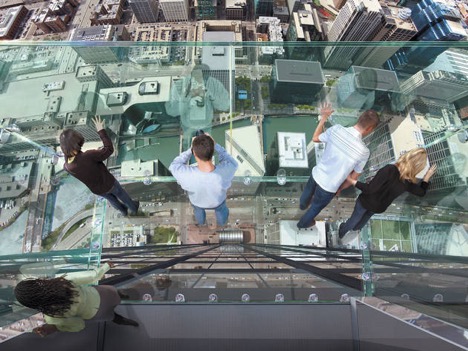
Other significant improvements are planned for the building lobbies, to create more dynamic, interactive spaces and access to dining and retail opportunities. A significant undertaking that is starting in June is the complete refurbishment of all 83 elevators and 97 passenger cabs. Including their respective machine rooms, motors, cables, and controls as part of the larger renovation project. The planned upgrade will utilize the Otis The CompassPlus system which organizes traffic flow and provides a personalized passenger experience — sorting passengers into each elevator based on their destinations to get people where they’re going significantly faster than conventional dispatching systems.


The space competed to date – we can see is already energizing the building. It will be interesting to see the completed work. When do you expect everything to be finished?
Once the renovations are complete, they will add more than 300,000 square feet of new retail, dining and entertainment space at the base of the tower, 150,000 square feet of new tenant amenity space, and 30,000 square-foot outdoor decks and garden.
TOWER HOUSE CONFERENCE AND EVENT SPACE: tenants have access to the new conference/event space located on the 34th floor. This space was completed as part of the renovation.
CONVENE: New York-based corporate meeting and event space has leased 55,000 square feet of space in the building.
Equity Office is anticipating that all the upgrades will be in place by early 2020.
The design firms and consultants for this project include:
Executive Architect: Gensler (Chicago)
Interior Design: Gensler (Chicago)
Façade Design: SKB (Seattle)
Signage & Wayfinding: Gensler (Chicago)
Tenant Amenity Space Design: Gonzalez Architects (Miami)
Structural: Thornton Tomasetti (Chicago)
MEP/FP: ESD (Chicago)
Civil: V3 (Chicago)
Facade: Thornton Tomasetti (Chicago)
Acoustic: KJWW (Chicago)
Fire/Life Safety: WJE (Chicago)
Parking: Walker Parking (Chicago)
Lighting: Kugler Ning (New York)
Landscape: OLIN (Philadelphia) | Forum (Chicago)
Contractor: Turner/Clayco (Chicago)

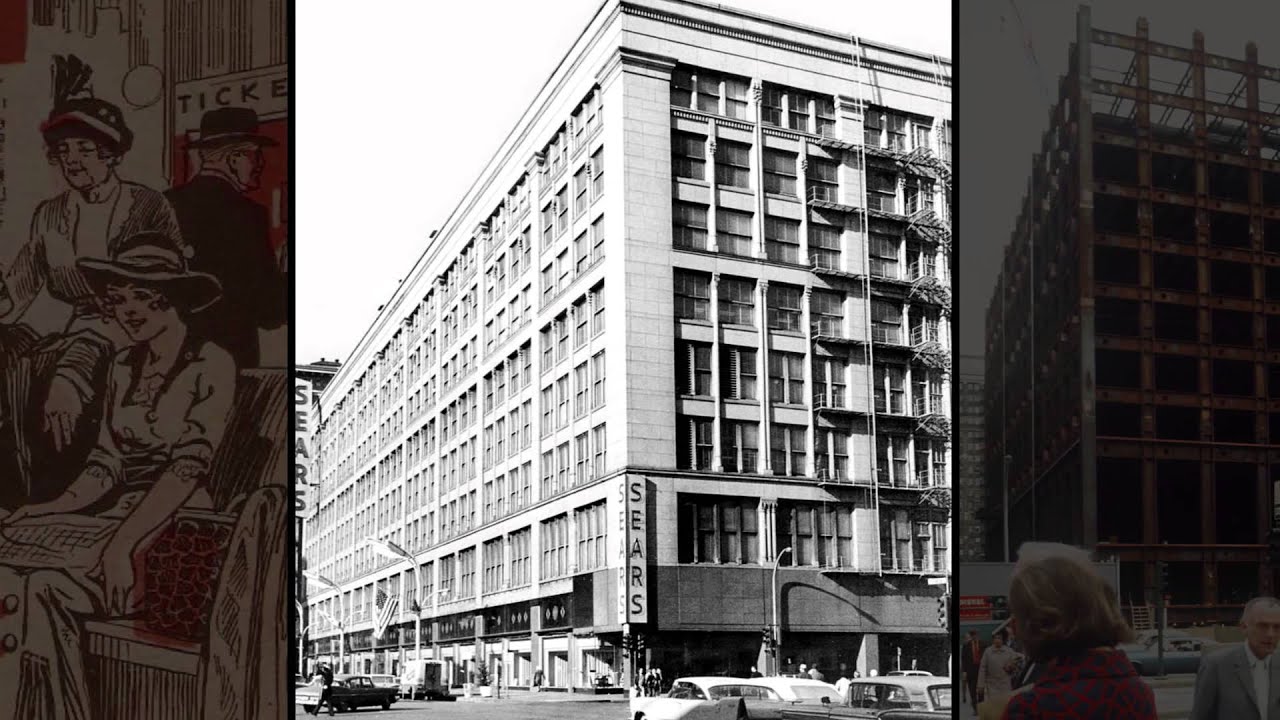

Hello
The content was good
I am very happy to meet your site
Useful articles
Thankful
[…] This article is the second in our series where we talk about the places people work, what makes those places work, and how we can learn from the varied experiences of people that are initiating the changes we see in our industry. We continue the conversation starting with our update on the changes taking place in Chicago, with the repositioning of the iconic Willis Tower. […]
[…] trend of “resimercial” design. Image courtesy of Todd Mason of Mason Halkin Photography 2. Chicago Willis Tower A look at Chicago’s Willis Tower, one of the most iconic office buildings in the United […]
[…] WDM has been following the ongoing transformation of the Willis Tower over the past few years. While much has been written about the changes and improvements that have already been completed, last month a new and exciting design element was unveiled. While the formal announcement emphasized the thought and philosophy behind the placement of the sculpture in the context of the overall transformation of the building from the landlord/real estate perspective, we had the opportunity to interview the artist and find out more about the project from his point of view. […]